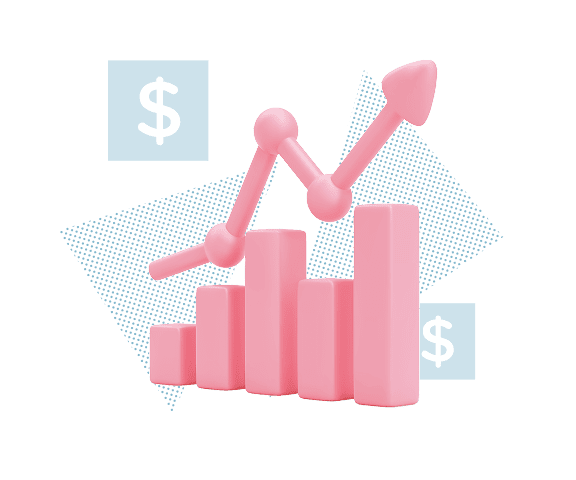Short-Term vs. Long-Term Fixed Deposit: Which Should You Choose?
Updated: 28 Jul 2025
Written bySingSaver Team
Team
The information on this page is for educational and informational purposes only and should not be considered financial or investment advice. While we review and compare financial products to help you find the best options, we do not provide personalised recommendations or investment advisory services. Always do your own research or consult a licensed financial professional before making any financial decisions.
In Singapore, Fixed Deposits (FDs) are financial instruments that are essential in crafting a savvy savings strategy, providing an array of term options to meet diverse financial goals.
Choosing the right FD term length is crucial for effective financial planning. FDs in Singapore offer a variety of terms, typically ranging from as short as one month to as long as several years. The decision between opting for a short-term or long-term FD hinges on the balance between higher interest rates and the need for flexibility in fund access.
Short-term FDs, generally less than half a year, cater to investors looking for quick returns and increased liquidity. They tend to attract lower interest gains but provide the flexibility to shift strategies swiftly in response to changing economic conditions. On the other hand, long-term FDs lock in funds for extended periods like a year to three years or more, typically offering higher interest rates in return for reduced access to your capital.
>> MORE: Best Fixed Deposit rates for 2025
The choice between these FDs depends significantly on your financial timeline and needs. If immediate liquidity is less of a concern and you are aiming for higher returns, a long-term FD might be more advantageous. Conversely, if you anticipate needing access to your funds sooner, a short-term FD could be the better route, albeit at the cost of lower interest earnings. Here is what you need to know about selecting the FD term that best aligns with your financial objectives and risk tolerance.
What is an FD term?
An FD term, or Fixed Deposit term, is essentially the duration for which your funds are deposited with a financial institution before they reach maturity. An FD term basically denotes the pre-selected duration for which a Fixed Deposit is maintained. In Singapore, these terms can vary extensively, ranging from as short as one month to as long as several years, allowing investors to choose aligned with their investment targets and cash flow requirements.
1 to 3-month Fixed Deposit
For investors seeking minimal commitment with flexible access to their funds, short-term Fixed Deposits provide an ideal solution. These FDs typically span from one to three months, catering to those who might need their funds soon or are strategising around shifting rate environments.
The nature of short-term FDs lies in their liquidity and flexibility, offering a convenient way for savers to park their funds without the long wait associated with longer-term investments. This immediacy is particularly appealing during periods of financial uncertainty or when better investment opportunities may arise shortly. Moreover, while these deposits generally yield lower interest rates compared to longer durations, they remain a popular choice for managing short-term financial needs without committing to lengthy terms.
For example, the best three-month fixed deposit recently advertised was at 2.65% per annum from the Bank of China, accessible with a minimum deposit of S$500 via mobile banking. ICBC also offers a 2.45% SGD Fixed Deposit promotional interest rate for its one-month fixed deposit, with a minimum deposit of over S$2,000. This rate illustrates the typical returns available for short-term FDs, offering savers a modest yield for brief periods.
However, the lower interest rates on short-term FDs reflect the trade-off for their liquidity. Despite the lower yields, the flexibility to reinvest or redirect funds after a few months remains a key advantage. This flexibility is crucial for those who expect to require access to their funds or those who might be waiting for more favourable rate conditions to make longer-term investments.
Despite their convenience, short-term FDs come with considerations, too. The primary drawback is the lower yield, which might not appeal to those seeking more substantial returns. Additionally, upon the maturity of these FDs, the reinvestment risk becomes apparent. Savers must decide whether to reinvest at current rates, which may have shifted unfavourably, potentially leading to lower returns on subsequent investments.
Furthermore, while short-term FDs are excellent for managing immediate liquidity needs, they are not ideally suited for long-term wealth accumulation. Savers with more significant financial aspirations might find that these FDs do not substantially contribute to long-term growth, making them a less attractive option for achieving substantial financial goals.
>> MORE: 4 ways to use Fixed Deposits (You never knew about)
6 to 9-month Fixed Deposit
Midrange FDs, generally spanning 6 to 9 months, tend to offer slightly better interest rates than shorter-term FDs, making them a viable option for those seeking moderate growth without a long-term commitment.
For instance, SBI Singapore provides a promotional 6-month FD rate of 2.85% for deposits starting from S$50,000, though the standard rate sits at 2.25%. Similarly, the Bank of China offers attractive rates of 2.55% for their 6 and 9-month terms, with a minimum deposit of S$500 via mobile banking. And Hong Leong Finance offers the same rates for their 9-month terms, contingent on mobile banking usage and deposit sizes over S$20,000.
These mid-term FDs require a balance between accessibility and yield, demanding financial discipline due to penalties for early withdrawal that could erase several months' worth of interest. It is therefore essential for depositors to have an emergency fund for unexpected costs, sufficient for three to six months of living expenses to mitigate the need to prematurely break the FD, thus preserving the interest benefits.
Over 12-months Fixed Deposit
Long-term FDs, typically extending beyond 12 months, are known for offering higher interest rates, thus requiring a solid commitment from depositors. In Singapore, however, the appeal of these rates often hinges not just on the duration but also on the deposited amount, which can significantly influence the accrued interest.
For example, if you invest S$10,000 in a Bank of China FD with a term of 12 months at an interest rate of 2.55% per annum, you would earn approximately S$255 in interest. Comparatively, placing the same amount for a 24-month term at a rate of 2% would generate around S$400 over two years. This illustrates that while longer durations generally provide higher returns due to compounding interest, the actual rate offered can affect the total earnings.
Such long-term FDs also demand a higher level of financial planning as early withdrawals can result in hefty penalties, negating potential interest gains. They are most suited for individuals who do not require immediate liquidity and are aiming to maximise earnings through stable, prolonged investments. Thus, long-term FDs represent a strategic choice for savers looking to build their financial foundation over time while navigating the variables of interest rates and deposit requirements.
>> MORE: Fixed Deposits vs. endowment plans vs. cash management accounts: Which should you choose?
Build an FD ladder to bridge the gap
In Singapore, constructing an FD ladder is a strategic approach to balance liquidity and optimise returns. This involves opening multiple Fixed Deposit accounts with staggered maturity dates, ensuring access to funds at regular intervals while capitalising on potentially higher interest rates associated with the different term periods.
By diversifying maturity dates, you create a steady flow of funds, aligning with both immediate and future financial needs. For instance, consider a ladder with FDs maturing in 3 months, 6 months, 1 year, and 2 years. This structure allows for incremental access to your capital, enabling you to reinvest maturing FDs at prevailing rates or utilise the funds as needed.
This method mitigates the risk of locking up all funds for an extended period, providing flexibility while maintaining a consistent return on your investments. Each rung of the ladder represents a strategic step towards managing liquidity and maximising growth in Singapore's dynamic financial landscape.
>> MORE: Best alternatives to Fixed Deposit accounts in Singapore
See FD rates by term and type
FD rates in Singapore fluctuate based on term length, deposit amount and account type. Online or mobile banking FDs may also offer better rates than counter services. Compare updated FD rate tables from various bank sites to find the most competitive yields.
How do FDs work?
As mentioned, FDs involve depositing a fixed sum for a predetermined period, earning a guaranteed interest rate. Interest is typically calculated annually, pro-rated for the FD's term. Early withdrawal usually incurs penalties, reducing the earned interest.
And in Singapore, FD interest is typically calculated using simple interest. This means you earn interest only on the principal amount you initially deposit. To calculate this, you'll need the principal amount (the initial deposit), the annual interest rate offered by the bank, and the term of the FD.
If the term is less than a year, you'll need to convert the annual interest rate to a monthly rate by dividing it by 12. Then, you multiply the principal amount by the monthly interest rate (expressed as a decimal), and then multiply that result by the number of months in the FD's term.
See FD rates by bank
To find the highest yielding FD offer in Singapore, compare rates across various banks. Consider factors like minimum deposit requirements, withdrawal penalties, and the bank's reputation when making your decision.
Discover the Best Fixed Deposit Rates for 2025 across Singapore's banks and financial institutions.
Stay ahead in everything finance
Subscribe to our newsletter and receive insightful articles, exclusive tips, and the latest financial news, delivered straight to your inbox.
Earn competitive yields on Singapore Treasury Bills (T-Bills) - explore our comprehensive guide.
Learn how T-Bills can potentially offer returns exceeding typical savings accounts. Explore "A Complete Guide To Treasury Bills (T-Bills) In Singapore" to understand how to maximise your investment potential.
About the author
SingSaver Team
At SingSaver, we make personal finance accessible with easy to understand personal finance reads, tools and money hacks that simplify all of life’s financial decisions for you.

